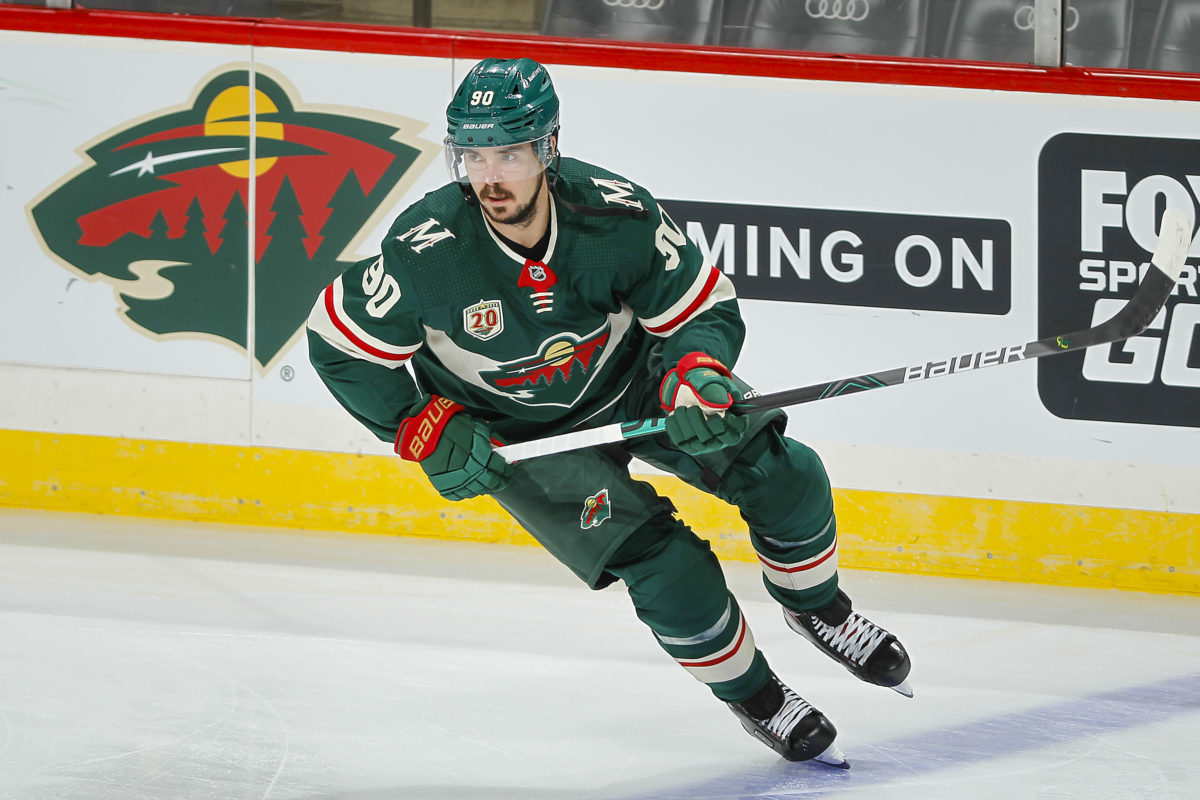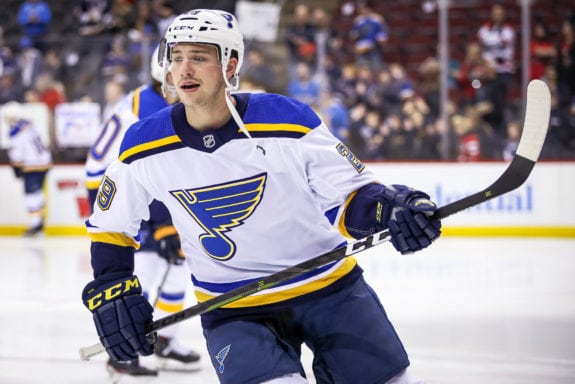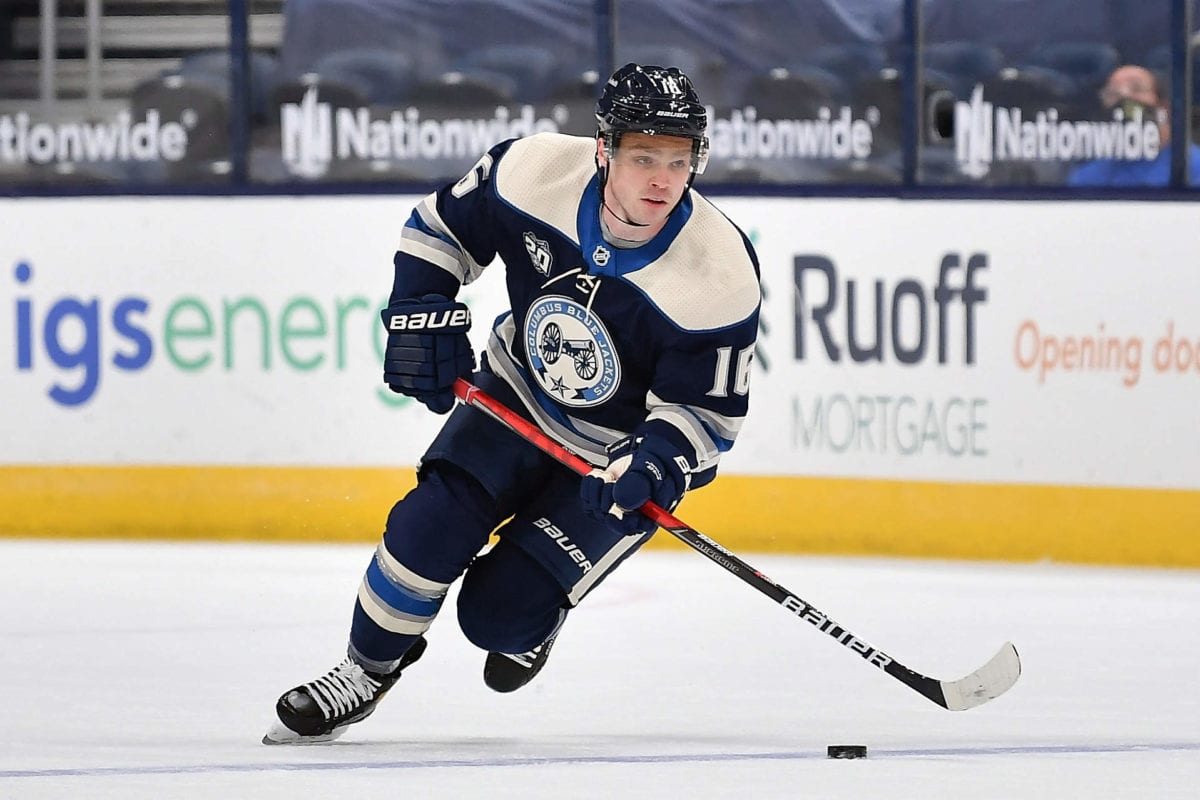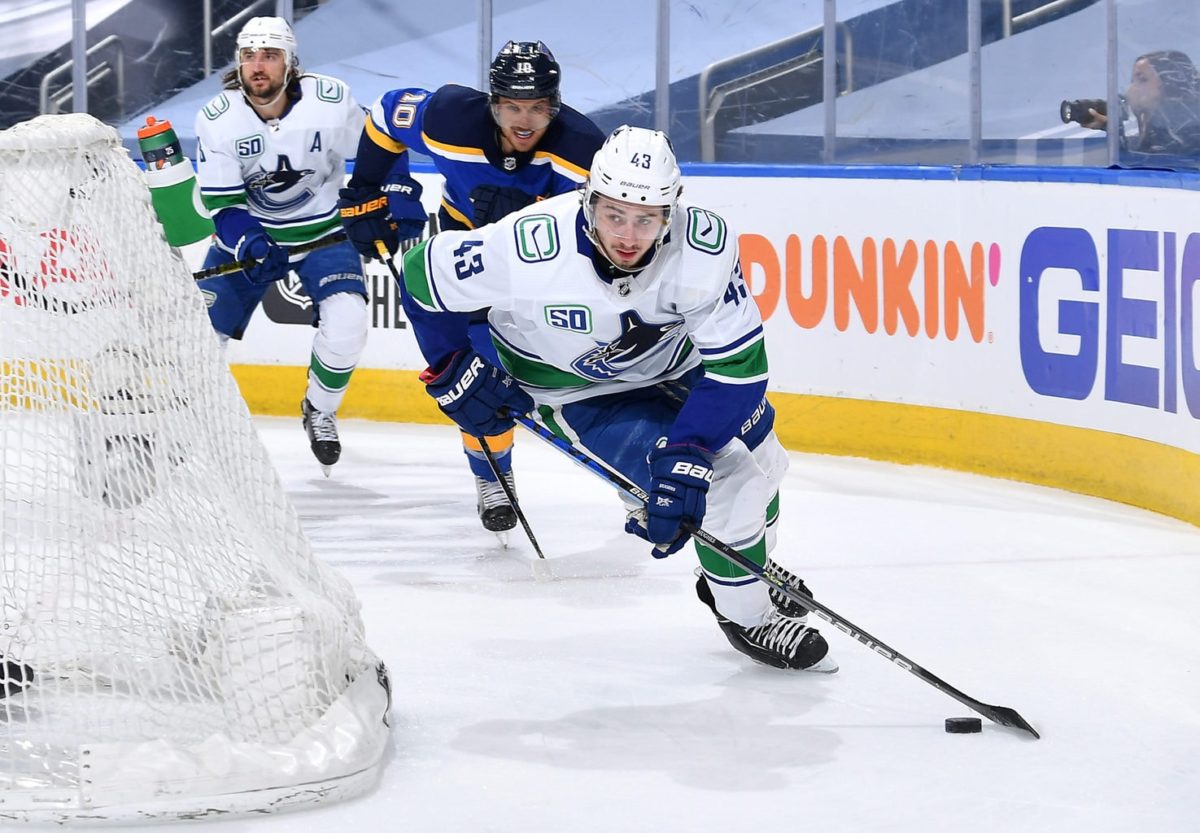The Seattle Kraken enter their inaugural season with the immense challenge of matching the success of their predecessors, the 2017-18 Vegas Golden Knights. With a respectable roster and a weak Pacific Division, Seattle should at least stay out of the NHL’s basement and possibly challenge for a playoff spot.
That said, if the Golden Knights were able to reach the Stanley Cup Final with a seemingly unimpressive roster, then perhaps the Kraken have their own historic season on the horizon. Here are five bold predictions for 2021-22, listed from numbers five to one.
5. Marcus Johansson Has a Renaissance Season
30-year-old Marcus Johansson has evolved into a journeyman, playing for four different teams the past three seasons. The Kraken inked him to an affordable one-year, $1.5 million contract that could become one of the off-season’s best low-key signings.
Forward Yanni Gourde will miss at least the start of the season, impacting the Kraken in several ways. Subsequently, several players will likely see their roles increase. Johansson could be one of them as, like Gourde, he can play multiple positions for multiple lines. Three of our staff writers project him to fit with the third line on opening night, while Sean Raggio and myself see him fitting on the second line. Regardless, Johansson has a chance to regain his scoring touch from his days with the Washington Capitals, whether that’s at wing or center.

He played the 2019-20 season with the hapless Buffalo Sabres and, in 60 games, still managed to score nine goals and record 21 assists for 30 points. The Kraken’s likely middle-six forwards are strong with the likes of Jared McCann, Calle Järnkrok, and Joonas Donskoi, among others. Assuming he drops no lower than to the third line, I could see Johansson as an offensive complement to his linemates, scoring around a point every other game. The x-factor to his resurgence is his health, as he has missed 107 games over the past four seasons.
4. Seattle Finishes With a Top-10 Defense
Kraken general manager Ron Francis drafted a well-rounded, reliable defensive unit in the Expansion Draft. He picked up stay-at-home specialists like Adam Larsson and Jamie Oleksiak, added offensive upside with Vince Dunn, and brought in veteran leadership with Mark Giordano. Additionally, he selected forwards with strong defensive skill sets, including Brandon Tanev, Jared McCann, and Nathan Bastian, among others.
Below I point out some key statistics for such players. For those less familiar with these stats, I’ll summarize: This group of players demonstrates an ability to limit opponents’ offensive chances by blocking shots, interfering with passing lanes, and throwing hits.
- Larsson: Started 70.2 percent of faceoffs in the defensive zone (dZS%) in 2020-21 and still recorded an on-ice save percentage (oiSV%) of 91.8.
- Oleksiak: Eclipsed his previous career time on ice average of 17:47 to 20:29 in 2020-21. Dished out 148 hits in 56 games and finished with an oiSV% of 91.6.
- Tanev: Appearing in 100 games over the past two seasons, he racked up a stellar 98 blocked shots and 383 hits.
- Bastian: Had a dZS% of 71.0 and finished with a Corsi for percentage of 45.0.
That all being said, what really vaults Seattle’s potential stinginess is its goaltending. The tandem of Philipp Grubauer and Chris Driedger may be the best in the Pacific Division both now and for years to come; both netminders come off career seasons and are well within their prime.
Last season with the Colorado Avalanche, the Vezina finalist Grubauer compiled a stunning 1.95 goals-against average (GAA) with seven shutouts in just 40 games. He was particularly strong on the penalty kill, recording a save percentage (SV%) of .909 — his best in five years. As with much of his career, he was also one of the more consistent starting goaltenders last year, recording an SV% of below .850 in only five of his 40 games.
Driedger broke out in 2020-21 and, at the least, should motivate Grubauer to stay at the top of his game. In 23 appearances with the Florida Panthers, he put up a 2.07 GAA and .927 SV% with three shutouts. He struggled on the penalty kill a little, surrendering 11 goals on 89 shots (.876 SV%), but he may have a better group of penalty killers in front of him in Seattle; the Panthers finished just 18th in 2020-21. If he can perform similarly with Seattle, then Grubauer can experience a little more rest than he did last year. He played in 40 of 56 games which, in an 82-game season, would equal about 58 games.
3. Vince Dunn Scores Over 50 Points
Dunn technically enjoyed his best offensive season in 2020-21 and, at 24 years old, has yet to reach his prime. He scored at a career-best rate of .465 points per game, recording six goals and 14 assists over 43 games — with a career-high shooting percentage of 8.2.
The Kraken’s defensive depth warrants a fairly even distribution of ice time; even if Dunn does not play on the top pairing, he could still average 20 to 22 minutes of ice time per game. He will also likely pair with a shutdown defenseman, whether that is Larsson or Oleksiak, and will therefore have plenty of chances in transition & odd-man rushes.

Additionally, Dunn will likely quarterback one of the Kraken’s power-play units. His most successful season on the man advantage came in 2019-20, in which he posted four goals and six assists — averaging 1:29 of time on ice, comparable to a second-unit defenseman. He will likely compete for the top unit with 37-year-old Mark Giordano, who led Calgary Flames defenseman in 2020-21 with eight power-play points. Alternatively, head coach Dave Hakstol may try pairing both together on the first special teams unit, with Dunn playing the right point.
2. The Kraken Trade for a Top-Six Center
Let’s assume it’s early February and the Kraken are in a top-four spot within the Pacific (see prediction one). They have plenty of available cap space — $9.2 million at the moment — and can make way for a star talent. In particular, they can address their lackluster center lineup by landing a top player from a bottom-feeder.
Looking at a few teams that could miss the playoffs, I see a few notable names — most of whom play either wing or center — who are unrestricted free agents (UFAs) in 2022. Tomas Hertl and Max Domi stand out to me most among the league’s weakest teams and come at cap hits under $6 million. Joe Pavelski, Claude Giroux, and Filip Forsberg are other 2022 UFAs who may find themselves on under-performing clubs this season, warranting possible trades.

Alternatively, Francis could pick up someone with a year or two remaining on their deal, such as the Flames’ Sean Monahan (two years at $6.375 million) or, with a little cap finagling, even a name like Jonathan Toews (two years at $10.5 million). That said, he will need to consider top prospect Matthew Beniers likely securing a spot on the 2022-23 roster.
Francis will have a couple of options for bargaining chips. He can either trade off a draft pick — such as the 2023 second-round pick he acquired in exchange for goaltender Vitek Vanecek — or he can move one of his wingers; Seattle is fairly deep at that position. Additionally, by acquiring a top-six center, someone like Gourde or Järnkrok has the option of moving to wing.
1. Seattle Finishes Second in the Pacific Division
The 2017-18 Golden Knights easily captured the Pacific Division in their first year. They consistently stayed at the top of the standings while fighting off a trio of deadly California teams — the Anaheim Ducks, Los Angeles Kings, and San Jose Sharks.
Heading into 2021-22, the Pacific is, at best, no stronger than it was in 2017-18. The Golden Knights are the clear front-runners, but beyond that, the final two or three playoff spots are a toss-up. The Edmonton Oilers have strung together consecutive seasons in which they have consistently stayed in a playoff spot. They can stay on that track this season, but with the loss of Adam Larsson and the goaltending tandem of Mikko Koskinen & 39-year-old Mike Smith, the Oilers may experience a small decline.
The other team I see possibly fighting with Edmonton for second is the Vancouver Canucks. Last year was an utter disaster for Vancouver, largely attributed to the league’s worst COVID-19 outbreak and the injury to Elias Pettersson. Nonetheless, the Canucks are just two seasons removed from an impressive 2019-20 run and now feature the likes of Oliver Ekman-Larsson, Conor Garland, and Jaroslav Halak. I see the Ducks, Kings, Sharks, and Flames finishing outside the top three spots.

The lackluster division opens the door for the Kraken to make the 2022 Playoffs and finish anywhere from fifth in the division to second. What drives me to place them second is, first and foremost, goaltending. Second, Seattle has the depth to, like the 2017-18 Golden Knights, distribute ice time and offensive opportunities fairly evenly; a depth player like Colin Blackwell or Morgan Geekie could break out similarly to a player like Alex Tuch did in 2017-18.
Lastly, I’ll point to the Kraken’s early-season schedule. In their first 16 games, they only face two teams that made it past the first round of the 2021 Playoffs — the Golden Knights (twice) and the Canadiens. After a difficult stretch in late November, they play 12 of their next 17 at home. This start to the schedule gives Seattle a chance to stay toward the top of the division, even as Gourde heals up.
Final Thoughts
The Golden Knights proved in 2017-18 that, at the least, NHL expansion teams can compete with a majority of established clubs. With their expansion draft selections, free agency pickups, and coaching staff, I think the Kraken can achieve the same in their first year.
When comparing inaugural season rosters, I think Seattle edges out Vegas. The goaltending is formidable, the defense is more proven, and the forward groups are at least even with each other. We will have to wait and see if Seattle can build and harness the same type of team chemistry and momentum that fueled Vegas to a division title and, ultimately, a trip to the Stanley Cup Final. That said, their individual talents and team composition should at least produce some unexpected results.
